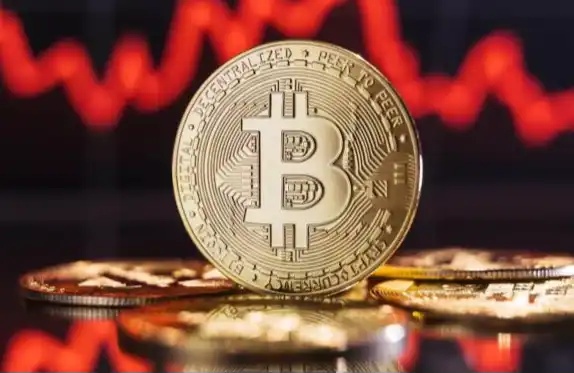BTC fell below $60,000, have institutional investors "stopped"?
Original title: "[Bitpush Daily Market Dynamics] BTC fell below $60,000, have institutional investors "stopped"? "
Original author: Mary Liu, BitpushNews
Pre-halving weakness continued to affect the price trend of the cryptocurrency market on Wednesday, and Bitcoin faced huge downward pressure.
Bitpush terminal data showed that after Bitcoin hit a high of around $65,540 in the early morning of the Eastern Time Zone, it fell all the way throughout the trading day, hitting a low of $59,640 (a figure that was 18% lower than the peak in March), and then rebounded slightly to above $60,000. As of the time of writing, the trading price was $61,434, a 24-hour drop of 3.1%.
The altcoin market fell under pressure earlier in the day and rebounded in the afternoon, with mixed performance, and the top 200 tokens by market value rose and fell. Injective (INJ) led the gains, up 14.8% to $27.93, Book of Meme (BOME) rose 14.2%, and Sui (SUI) rose 12.3%. Mantra (OM) fell the most, down 11.4%, followed by Saga (SAGA) down 10.1%, and Echelon Prime (PRIME) down 9.4%.

The overall cryptocurrency market cap is currently $2.24 trillion, with Bitcoin's dominance rate at 53.6%.
U.S. stocks opened higher and fell as traders assessed the risks posed to the market by the conflict in the Middle East. Uncertainty about the timing of rate cuts also made investors hesitant to increase their exposure to risky assets, leading to further weakness. As of the close, the S&P, Dow Jones and Nasdaq were all down, down 0.58%, 0.12% and 1.15%, respectively.
Have institutional investors stopped buying Bitcoin?
In the X post, Stockmoney Lizards analysts said that more downward movement in Bitcoin is consistent with the Wyckoff analysis method.
As shown in the figure below, Bitcoin's recent price rise and fall are similar to the trends typically seen during the formation of the Wyckof distribution model. As of April 17, BTC has entered the "signs of weakness" stage of the model.

This phase indicates that demand is weakening, which in turn causes the asset to fall. StockMoney Lizards believes that in the case of Bitcoin, the lack of demand is due to the growing risk aversion caused by the Federal Reserve's long-term higher interest rate policy and the escalating Iran-Israel conflict.
The analyst believes that "large institutions have paused their purchases for now," adding: "ETF inflows are unprecedentedly low. Our guess is: they sense that difficult times may be coming for the market."
Data from Farside Investors shows that U.S. spot Bitcoin ETFs have seen outflows of nearly $150 million since the outbreak of the Iran-Israel conflict on April 12.

Stronger Dollar = Weaker Crypto
The weakness in Bitcoin and broader financial markets comes as the U.S. dollar has experienced its best five-day gain since February, rising more than 2% since April 10. As of writing, the U.S. Dollar Index DXY is trading at 106.23, the highest level since November 2.

Historically, higher interest rates have led investors to buy higher returns on U.S. Treasuries and time deposits, thereby increasing demand for the U.S. dollar, which is reflected in the recent rise in the U.S. Dollar Index.
Market analyst Bitcoin Schmitcoin posted on the X platform that the DXY index moves inversely to the crypto market.
He believes: "Crypto bull market = DXY bear market; crypto bear market = DXY bull market; crypto top = DXY bottom; crypto bottom = DXY top, while DXY is consolidating, it is an indicator of crypto/stock volatility."
This begs the question: Will the halving be a sell-off news event?
Bitcoin Schmitcoin said: "We are seeing a possible top in major stock markets, and the dollar gold is showing tremendous strength after cleaning up a decade-long consolidation. All of this suggests that we are starting to see investors turn to hedging mechanisms to deal with macro uncertainties. DXY broke out because people are looking for cash rather than assets. People buy gold because they are hedging. This is not a good sign, and as much as I want to be bullish on BTC, it is really difficult for me to stay in this bullish camp. Remember my words: if the US dollar index starts to rise, everything else will fall as a result."
The price reaction to Bitcoin halving may not happen immediately
With only two days left before the 2024 Bitcoin halving, cautious investors are choosing to wait and see whether the price of BTC will retreat again or rebound sharply.
Coinify CEO Rikke Staer said in a report that Bitcoin's price reaction to the upcoming halving may take several months, and it may be challenging to replicate the large percentage increases observed in the past.
He said: "Price reactions usually do not occur immediately. Historically, the main growth after the halving occurred within 6-18 months. As the market size increases, larger price fluctuations become statistically less likely."
Staer added that due to the huge size and liquidity of the current Bitcoin market, the huge percentage gains observed in previous halvings may be difficult to replicate.
Original link
Welcome to join the official BlockBeats community:
Telegram Subscription Group: https://t.me/theblockbeats
Telegram Discussion Group: https://t.me/BlockBeats_App
Official Twitter Account: https://twitter.com/BlockBeatsAsia


 Forum
Forum Finance
Finance
 Specials
Specials
 On-chain Eco
On-chain Eco
 Entry
Entry
 Podcasts
Podcasts
 Activities
Activities
 OPRR
OPRR








